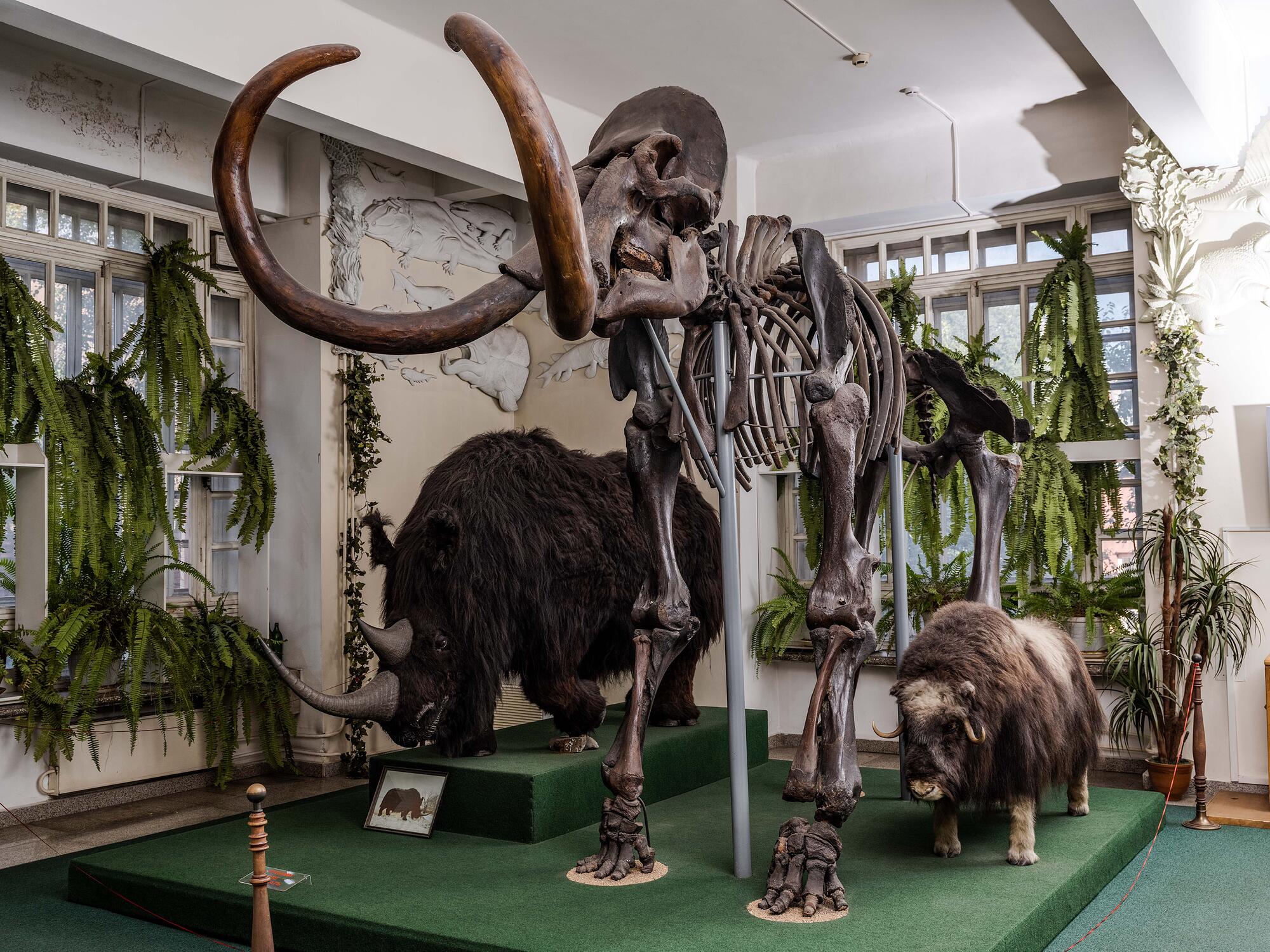This is the skeleton of an adult male mammoth that was discovered in 1892 near Krasnoyarsk. The mammoth is an extinct animal species from the elephant family that emerged on Earth more than 5 million years ago. Mammoth bodies, found in the permafrost layer in Siberia, Alaska and on the coast of the Arctic Ocean, are covered with meat, skin and wool, so their anatomy is well studied.
The word “mammoth” is derived from the Mansi word “mang ont” — “ground horn” — and spread into many European languages, including the scientific Latin term Mammuthus. Mammoths lived at the same time as humans. Numerous mammoth bones as well as rock paintings and sculptures, including those made of mammoth bone, were found at the sites of primitive tribes. Scientists are of different opinions as to mammoth hunting: according to one version, cavemen drove the mammoth into a pit with torches and stabbed it with spears, while according to another theory they could not overcome the huge animal and only tracked it down waiting for its natural death.
During the Pleistocene epoch, the mammoth was the largest and strongest animal on land. It reached 3.5 meters at the withers and weighed up to six tons. The mammoth had a massive body, short legs, thick fur and long, curved tusks up to four meters long. Mammoths used their tusks to dig through snow and soil, peel tree bark, and uproot shrubs.
The mammoth was a herbivorous mammal. Aside from its tusks, it had only four teeth, two in the upper jaw and two in the lower one. The operating surface of the teeth was ridged, like a grater: the mammoth did not chew but ground its food. The teeth gradually erased, and new ones grew in their place: during its life, the mammoth’s teeth changed up to six times.
There are two main hypotheses about the causes of the mammoth extinction: climate change with a reduced food supply and the development of human civilization with more advanced hunting weapons and traps. Relict pygmy mammoths on Wrangel Island were the last to go extinct just 3,000 years ago due to interbreeding within one small population.
In 2003, Tomsk palaeontologists proposed a new
theory of the disappearance of mammoths after the discovery of their bones in
the Kemerovo region. According to scientists, 18 thousand years ago Siberian
mammoths were already sick: their bones became very fragile and broke quickly.
This happened because the layer of earth had risen and groundwater stopped
carrying the amount of calcium necessary for the giants to the surface.




